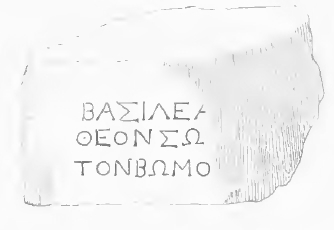
PHRC028 : Dedication to Eumenes II, Pergamon - Mysia (158-133 BC) Dedication
Permanent ID http://s.phrc.it/phrc028
Images:
Photo 1: Drawing of the stone from IvP I 59
Photo 2: Plan of the medieval walls of the citadel, from AvP VIII.1 (IvP I)

Text constituted from: Caneva 2020.
Other editions: IvP I 59.
See also: Suk Fong Jim 2017.
Images: IvP I 59 (drawing).
Further bibliography: Caneva 2019 on the reuse of inscriptions from the sanctuary of Athena being reused as building blocks in the Byzantine walls south of Athena's terrace.
Online record:
This fragmentary marble block was the base of a statue of an Attalid king. As shown by the inscription, the statue was accompanied by an altar of the same ruler, which makes the statue most probably a cultic one. The identification of the recipient has been considered uncertain by the editor Fränkel, who opted for Attalos I while also proposing the name of Eumenes II as a possible alternative. The latter king is actually a more plausible match since Eumenes II is often referred to as Theos Soter in the inscriptions dating after his death (159/8). Conversely, in the preserved evidence the name of Attalos I is only accompanied by the epithet Soter. A very fragmentary inscription on a marble block found in the eastern part of the gymnasium ( MDAI(A) 32 (1907), p. 310, no. 32) is too heavily restored to provide a reliable parallel to Fränkel’s integration; moreover, by reading the commentary of editor of the gymnasium base, it is clear that he relied on the text of IvP I 59 for his conjecture. The date 158 is therefore to be taken as a plausible post quem for the dedication.
Our base was found reused in the Byzantine walls closing the southern side of the terrace of Athena. Since in general the inscribed objects found in the portion of the medieval walls and in the nearby square tower originally belonged to the precinct of this goddess (Caneva 2019), the altar and statue were erected within this prominent royal space, at roughly the same period as the altar of the Bakchoi PHRC026.



